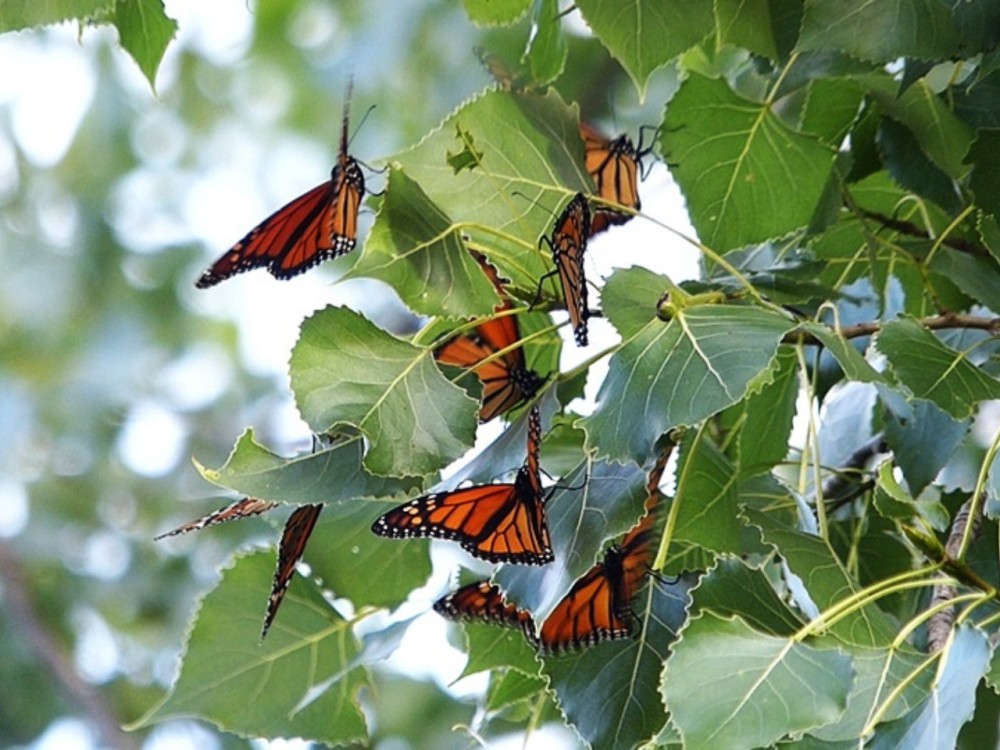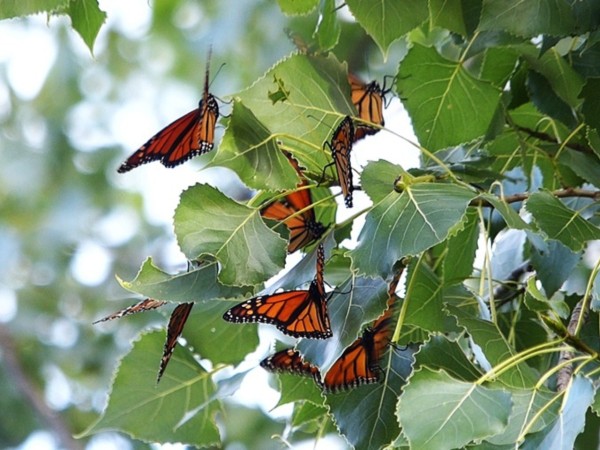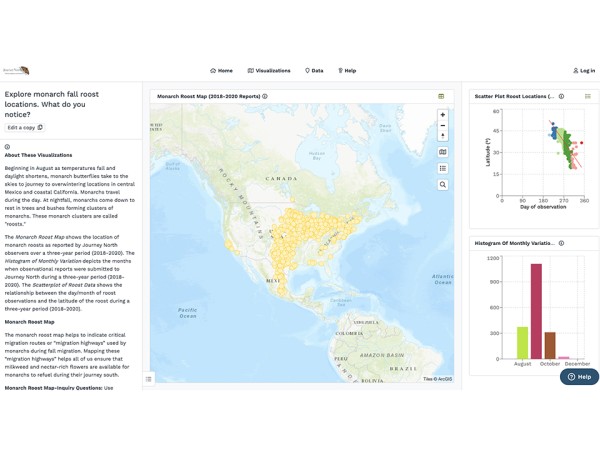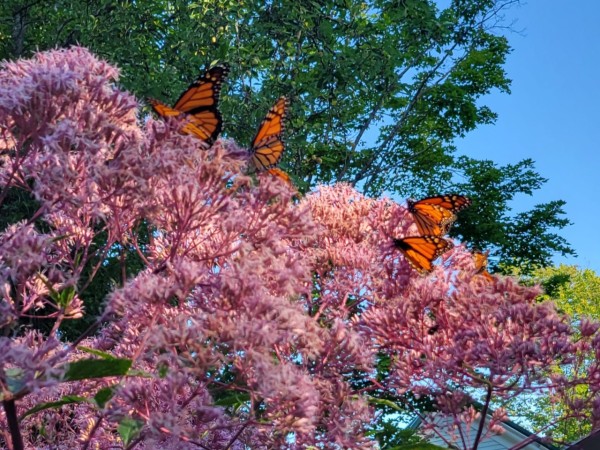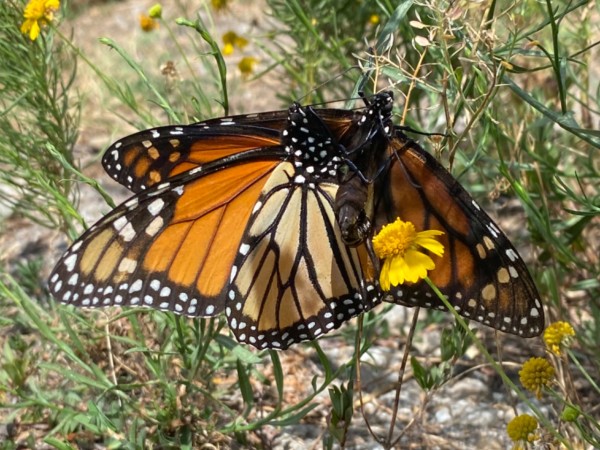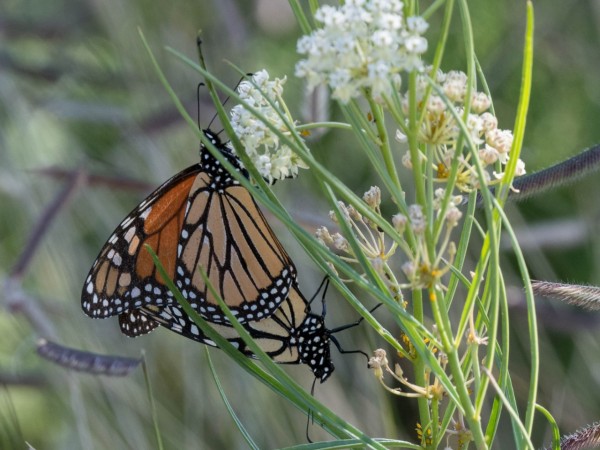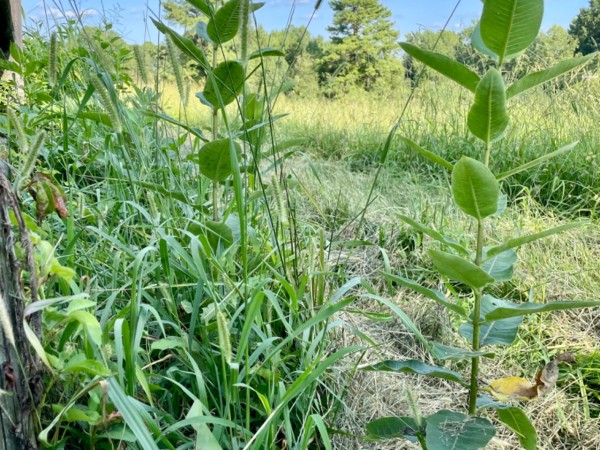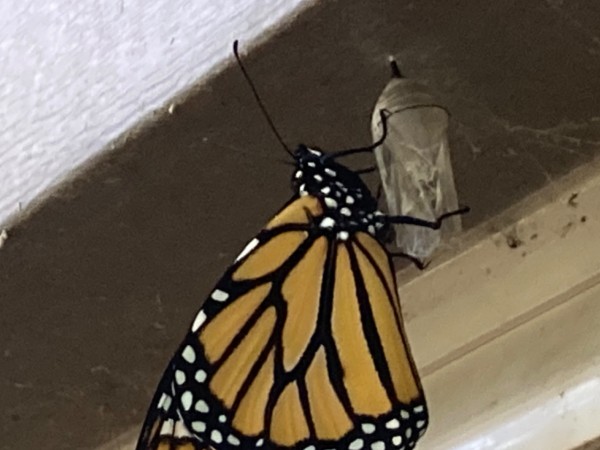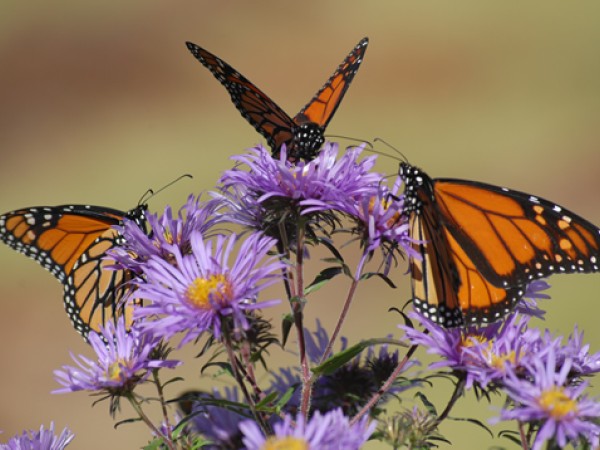Fall Migration Is Underway
First monarch fall roosts have been observed. Monarch activity is ramping up as preparations for fall migration begin. Journey North volunteers are still reporting monarch breeding behavior and many observations of eggs, larvae, and nectaring adults.
Has migration started? Yes!
Migrating monarchs change both physiologically and behaviorally. Declining daylength triggers the monarch’s migratory state. Beginning in mid-August in the north, adults are in diapause when they emerge from the chrysalis. They are full grown but not reproductively mature. Their reproductive development is on pause. These monarchs will not complete development and begin to mate until next spring in Mexico. The hormone deficiency that leads to diapause also leads to increased longevity. Breeding monarchs live only 2-6 weeks; migratory monarchs live up to 8 months.
There are three signs of migratory monarchs: (1) flying in directional flight; (2) clustering in overnight roosts and (3) nectaring intensely.
First Roosts Seen
Migrating monarchs cluster together in trees at night, forming what is called a roost. A roost may have a handful of butterflies or more than you can count. Sometimes a large roost forms in several adjacent trees. If you suspect monarchs might be roosting nearby, visit the area in the evening or early morning. Let us know the number of monarchs in the roost along with habitat conditions that may indicate what attracted them to the area (e.g., are there nectar sources nearby, are they protected from the wind, are there waterways nearby, etc). Because roosts are dynamic and often reform over multiple nights, please submit a new report for each day you observe the roost.
Doug in Barnesville, MN has submitted several observational reports of monarch roosts from a remnant prairie. He recorded his first roost on 08/19/2022 with an estimated 650 individuals Doug continued to submit observations daily when the roosting monarchs were present. His last observation was on 08/30/2022.
"Just went out to our prairie remnant that has a history of fall roosts. Saw roosts of about 10, 40, 100, 100, 100, 150, 150. Was getting quite dark so I was moving fast, may have been more. Roosting on Cottonwoods and on a Russian olive..." (08/19/2022) ... "Saw roosts of 12,15,25 and some singles and pairs here and there. Wind light NW and 77F. The Monarchs were moving out of here today with a lot of directional flight to the SW through the farmyard...They will stay here until they build the strength to make the migration. Still some good Meadow blazing star and that held the Monarchs tonight." (08/30/2022)
Pat in East Farmington, WI kept an eye out when she saw 2 or 3 dozen monarchs during one afternoon. She suspected these monarch to be migrating south with a potential to roost nearby. Pat visited the area again that evening and was rewarded with a sighting of a roost. She reported "quite a few scattered monarchs near the large trees by the road. May have been other clusters and roosts throughout the prairie acreage...I suspect tonight's success was because of location: high prairie close to the St. Croix River (I believe the Monarch migration may be influenced by rivers including the Mississippi....no proof of course.)" (08/26/2022)
Monarch Fall Roost Data Visualization
If you haven't already, take a look at the Journey North visualization for educators hosted by FieldScope/BSCS Science Learning.
Intense Nectaring Behavior Observed
Rosie in Ashland, NH observed "At least two dozen nectaring, mid-day...What a pleasant surprise!" (08/28/2022)
Mating and Egg Laying Still Happening
Kelli in Hominy, OK found "5 Monarch’s in our yard today including [a] mating pair." (08/27/2022)
T. Jay in Santa Fe, NM observed several mating pairs on Horsetail Milkweed patches. (08/27/2022)
Debbie in Mebane, NC estimated that she saw about 70 monarchs nectaring from Common Milkweed in a front pasture and perineal garden. Debbie also reporting finding "a few dozen eggs" on both the Common Milkweed around her home and along the top fence rail. She exclaimed it was "About time!" for seeing eggs. (08/26/2022)
Taking Flight
Joe in Bishopville, MD watched as a "monarch hatch from chrysalis then as he pumped fluids into wings then dried wings for two hours. First flight 5’. Second movement 10’. Third movement 20’ into tree. Fourth movement into one of my vegetable gardens then he flew in and out of milkweed and vegetable gardens for hours until dark when I lost sight … amazing day on the farm." (08/31/2022)

